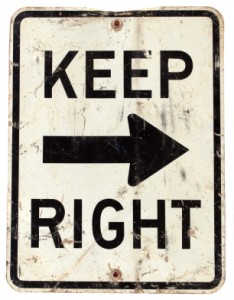Everyone says they want to do the right thing. But in the struggle to do it, how do we know what is truly right? From Built to Last (1) and the last blog, we discovered that the Do-Rights created companies that were incredibly successful. How did they know what was right? How do any of us know that?
OUR NEED TO KNOW THE RIGHT THING
We’ve lost the art of knowing the Highest Moral Action, the HMA: Sadly, 75% of our high school and over 60% of college and grad students cheat (2); 43% of U.S. children live without a father(3); and 87% of U.S. managers would commit fraud to make their firms look better(4). According to Kerry Patterson’s research in Crucial Conversations, 98% of Americans are conflict avoidant (5) – and, ergo, are cowardly. Our once-robust economy, now busted by fraud, grows joblessness and insecurity. Meanwhile, we argue that we can’t really know the right thing.
BRAVE, TRUTHFUL, UNSELFISH
I was a small, scared, asthmatic, legally blind kid in a tough, Fist City black ‘hood. Movies were an escape. I loved Disney’s pre-Pixar Pinocchio – a little wooden puppet who wants to be a real boy. The Blue Fairy says the puppet’s wish for humanity will come true if he is “brave, truthful and unselfish” – in other words, if he can become a prince of character.
THE CONSCIENCE
To be brave, truthful and unselfish, Pinocchio (and young Gus) will have to listen to his conscience.
Here’s the catch: Pinocchio doesn’t know what a conscience is. The real challenge in 21st Century America is that we don’t know, either. We no longer morally reason. Today, “conscience” is outdated. I’m an educator, and a corporate and government trainer, and I don’t hear that word in the classroom or seminar space until I raise it. The word, “Conscience,” causes people to frown, pause and think.
The kind Blue Fairy commissions Jiminy Cricket to act as Pinocchio’s conscience to face temptation, bad company, easy wrongs and moral disaster. Jiminy warns him, but the wooden lad is “grabbing life.” Mistakes continue; Pinocchio lies. This endangers everyone, like a moral Ebola virus.
In the final act, he sees and then does the highest moral action: he has to save others from his errors. This will cost Pinocchio’s life.
In imitation of reality, the Blue Fairy grants a second chance to the now brave, truthful and selfless puppet. We get it: when conscience is animated, we see the highest moral action, and love becomes possible, relationships flourish in happiness, and life gains deeper meaning.
But that’s just a fairy tale, right?
BRAVE
Brave is Disney’s newest in a pantheon of fifty-plus cartoon films. To protect her own interests, Merida, a headstrong princess with hair the color
of a forest fire, resorts to the advice of a witch. Where’s Jiminy Cricket when we need him? The resulting spell cast upon her mother, Elinor, produces a family and community tragedy.
Merida must discern the meaning of the riddle, Mend the bond torn by pride. She must stop blaming the witch and accept that her self-centered actions led to awful consequences. It’s only when a conscience-stricken Merida sees the highest moral right – the hardest thing to do – that healing occurs.
But it’s only a fairy tale, right?
Maybe not. The movie-reviewing website Rotten Tomatoes found that Brave was liked by an impressive 80% of viewers. Is this speaking to a longing for us to KNOW and DO what is right?
In Courageous Leadership seminars, I teach Three Tools to know the Highest Moral Action. The first, installed by original engineering in each of us, is the conscience. Except for Disney and the Built to Last Do-right firms, it’s gotten a bad rap.
We access Conscience by stepping on our mental brakes, letting Conscience whisper to us and by discerning the highest moral action. We accept that trying to figure out the right thing is better than saying it can’t be identified. The alternative method is to ignore the moral whispers and prepare for the eventual unintended results to yell in our ears.
In subsequent blogs, I’ll reveal the other two methods of discerning the Highest Moral Action. In today’s turbo-world, Jiminy Cricket needs help!
QUESTION: What behaviors can you adopt to slow down on high-speed moral intersections, and allow Conscience to have its small but powerful voice?
(1) Jim Collins and Jerry Porras, Built to Last: Successful Habits of Visionary Companies, HarperCollins, 1994
(2) www.academicintegrity, the International Center for Academic Integrity
(3) U.S. Department of Census, 2010
(4) 2010 Global Fraud Study by the Association of Certified Fraud Examiners
(5) Patterson, et.al., Crucial Conversations, McGraw-Hill, 2nd Ed (2011







